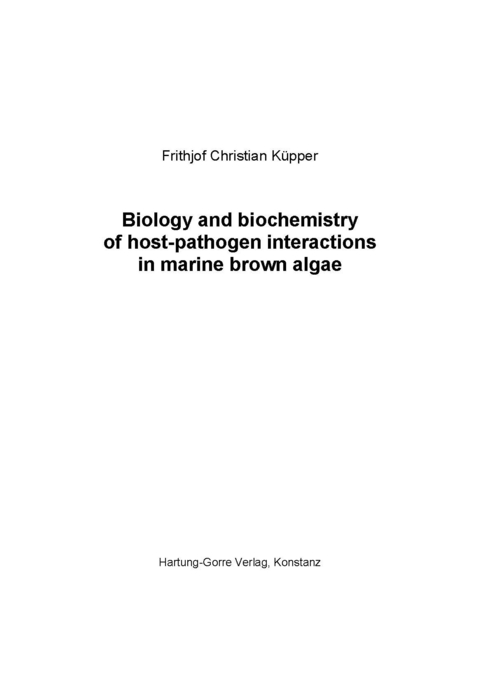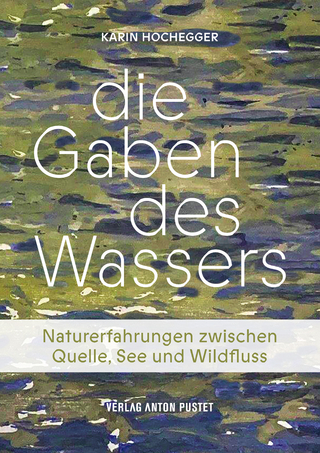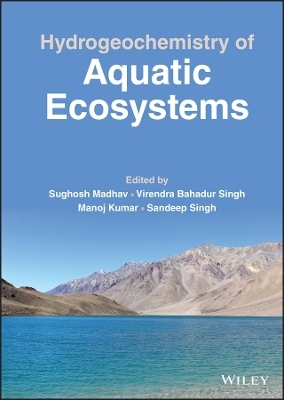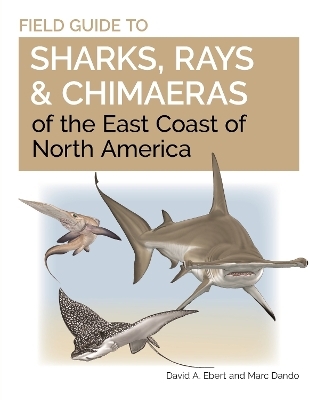
Biology and biochemistry of host-pathogen interactions in marine brown algae
Seiten
2001
|
2001
Hartung-Gorre (Verlag)
978-3-89649-695-9 (ISBN)
Hartung-Gorre (Verlag)
978-3-89649-695-9 (ISBN)
- Keine Verlagsinformationen verfügbar
- Artikel merken
Associations of marine algae with symbiotic or parasitic microorganisms are ubiquitous
phenomena known for a long time. However, there is an almost complete lack of knowledge
on details of such interactions. The intention of this study is to use the potentials of modern
biological and biochemical techniques in order to analyze the reaction of brown algal hosts to
the attack by pathogens and epibionts.
A 3-year field study at different localities on the European Atlantic coast revealed that
Pylaiella littoralis populations were subject to massive epidemics of the parasites
Eurychasma dicksonii, Chytridium polysiphoniae and Anisolpidium rosenvingei. Laboratory
cultures were used to investigate the association of Eurychasma and Chytridium with brown
algal hosts from different taxonomic groups: Eurychasma has a much broader host range than
Chytridium, comprising members of all brown algal orders investigated, and it tolerates a
wider range of temperatures than the latter. Phylogenetic studies based upon 18 S rRNA
genes revealed that Eurychasma dicksonii belongs to the Oomycota, branching at an ancestral
position between terrestrial plant pathogens and free-living members of the marine
heterotrophic picoplankton. Chytridium polysiphoniae, a fungus, appears more closely related
to the genera Rhizophydium and Spizellomyces (Chytridiomycota) than to other known
Chytridium species. Chytridium produces chitin, whilst Eurychasma does not. Early stages of
Eurychasma infection have a rather modest effect on host physiology. The photosynthetic
capacity is enhanced, suggesting a temporary stimulation of host metabolism for hypertrophic
growth. Chytridium, in contrast, has an immediate detrimental effect on host photosynthesis,
which breaks down once a cell is infected, leading to the rapid death of infected cells.
Laboratory cultures of kelp sporophytes (Laminaria digitata, Macrocystis pyrifera)
were used to study biochemical responses of hosts to pathogen attack. Oligoalginates are
recognized by L. digitata sporophytes as endogenous elicitors, triggering a rapid oxidative
burst, an efflux of iodine, and a resistance to attack by a pathogenic endophyte
(Laminariocolax tomentosoides). Furthermore, the oxidative burst also seems to convey
natural resistance against alginolytic, bacterial epibionts and non-host resistance against
Eurychasma dicksonii. Signal transduction following oligosaccharide recognition includes
K+, Cl- and Ca2+ channels, protein phosphorylation and phospholipase A2. The capacity of
performing an oxidative burst appears as a characteristic feature of the alginate-rich,
morphologically complex sporophytes of the Laminariales, whilst the vast majority of other
brown algae do not show this response.
phenomena known for a long time. However, there is an almost complete lack of knowledge
on details of such interactions. The intention of this study is to use the potentials of modern
biological and biochemical techniques in order to analyze the reaction of brown algal hosts to
the attack by pathogens and epibionts.
A 3-year field study at different localities on the European Atlantic coast revealed that
Pylaiella littoralis populations were subject to massive epidemics of the parasites
Eurychasma dicksonii, Chytridium polysiphoniae and Anisolpidium rosenvingei. Laboratory
cultures were used to investigate the association of Eurychasma and Chytridium with brown
algal hosts from different taxonomic groups: Eurychasma has a much broader host range than
Chytridium, comprising members of all brown algal orders investigated, and it tolerates a
wider range of temperatures than the latter. Phylogenetic studies based upon 18 S rRNA
genes revealed that Eurychasma dicksonii belongs to the Oomycota, branching at an ancestral
position between terrestrial plant pathogens and free-living members of the marine
heterotrophic picoplankton. Chytridium polysiphoniae, a fungus, appears more closely related
to the genera Rhizophydium and Spizellomyces (Chytridiomycota) than to other known
Chytridium species. Chytridium produces chitin, whilst Eurychasma does not. Early stages of
Eurychasma infection have a rather modest effect on host physiology. The photosynthetic
capacity is enhanced, suggesting a temporary stimulation of host metabolism for hypertrophic
growth. Chytridium, in contrast, has an immediate detrimental effect on host photosynthesis,
which breaks down once a cell is infected, leading to the rapid death of infected cells.
Laboratory cultures of kelp sporophytes (Laminaria digitata, Macrocystis pyrifera)
were used to study biochemical responses of hosts to pathogen attack. Oligoalginates are
recognized by L. digitata sporophytes as endogenous elicitors, triggering a rapid oxidative
burst, an efflux of iodine, and a resistance to attack by a pathogenic endophyte
(Laminariocolax tomentosoides). Furthermore, the oxidative burst also seems to convey
natural resistance against alginolytic, bacterial epibionts and non-host resistance against
Eurychasma dicksonii. Signal transduction following oligosaccharide recognition includes
K+, Cl- and Ca2+ channels, protein phosphorylation and phospholipase A2. The capacity of
performing an oxidative burst appears as a characteristic feature of the alginate-rich,
morphologically complex sporophytes of the Laminariales, whilst the vast majority of other
brown algae do not show this response.
| Erscheint lt. Verlag | 24.9.2001 |
|---|---|
| Verlagsort | Konstanz |
| Sprache | englisch |
| Maße | 150 x 210 mm |
| Gewicht | 240 g |
| Einbandart | Paperback |
| Themenwelt | Naturwissenschaften ► Biologie ► Limnologie / Meeresbiologie |
| Schlagworte | Braunalgen • HC/Biologie/Sonstiges • Meeresbiologie • pathogene Wechselwirkungen |
| ISBN-10 | 3-89649-695-6 / 3896496956 |
| ISBN-13 | 978-3-89649-695-9 / 9783896496959 |
| Zustand | Neuware |
| Informationen gemäß Produktsicherheitsverordnung (GPSR) | |
| Haben Sie eine Frage zum Produkt? |
Mehr entdecken
aus dem Bereich
aus dem Bereich
Naturerfahrungen zwischen Quelle, See und Wildfluss
Buch | Hardcover (2024)
Verlag Anton Pustet Salzburg
30,00 €
Buch | Softcover (2024)
Princeton University Press (Verlag)
43,65 €


